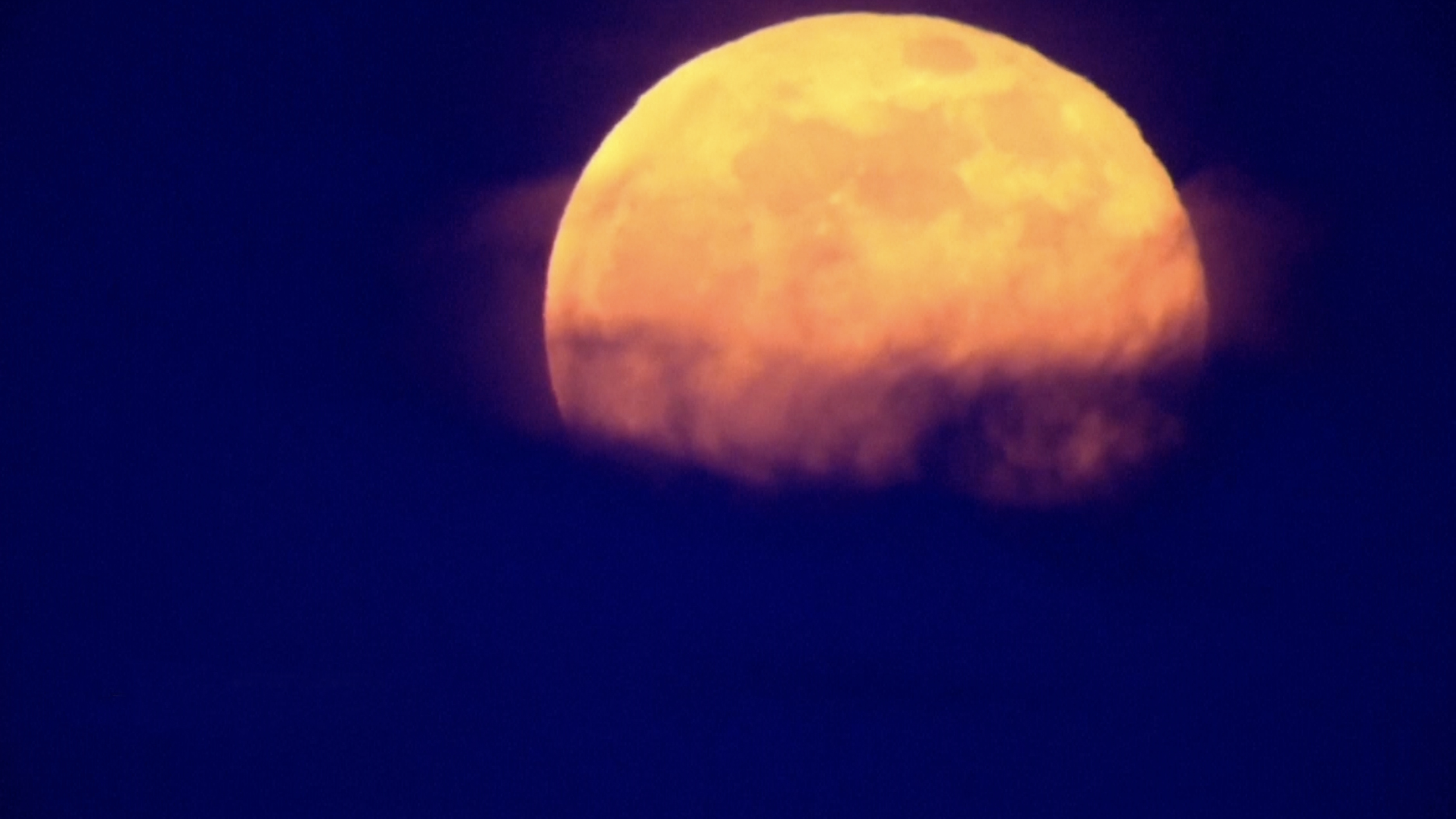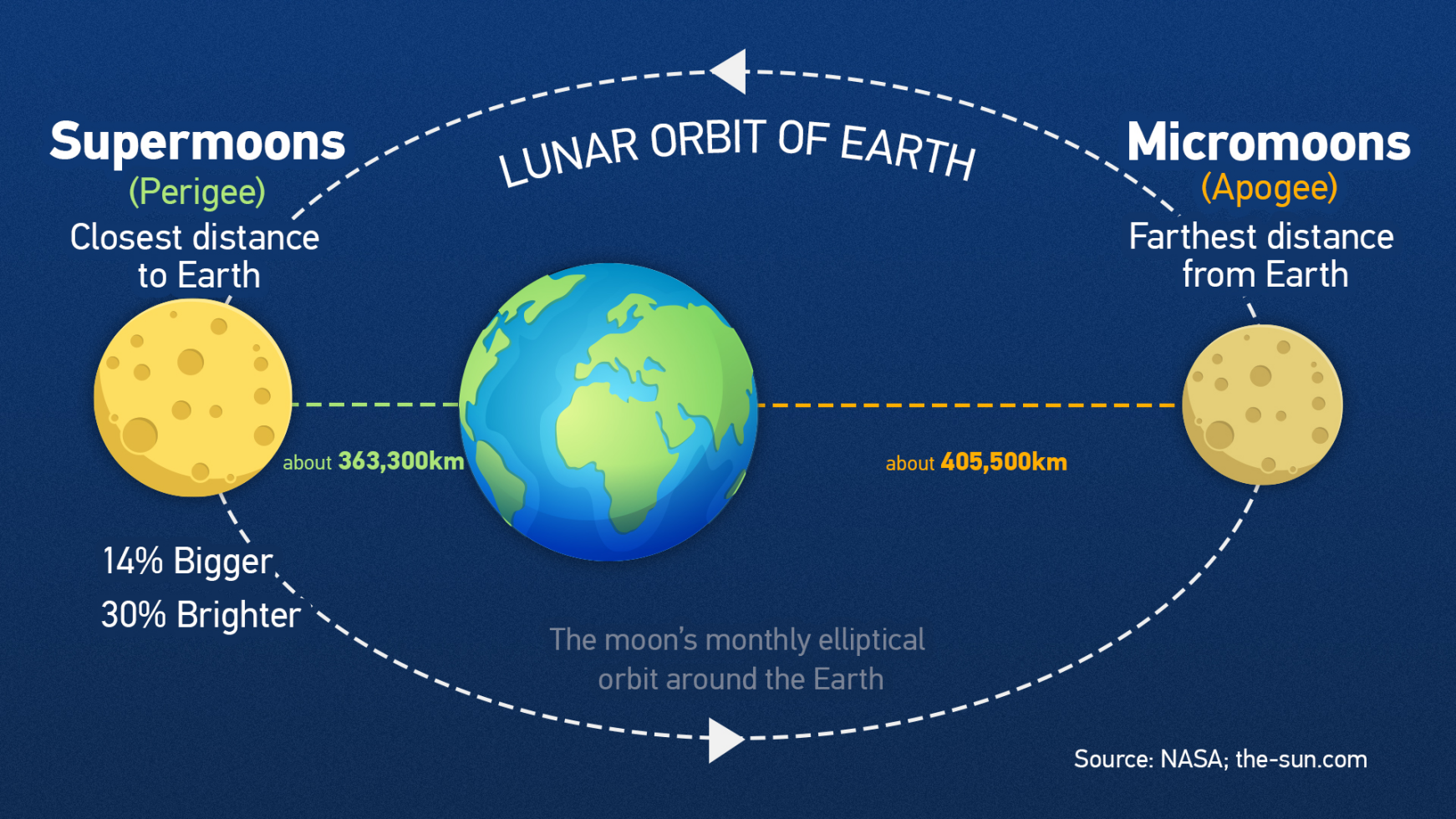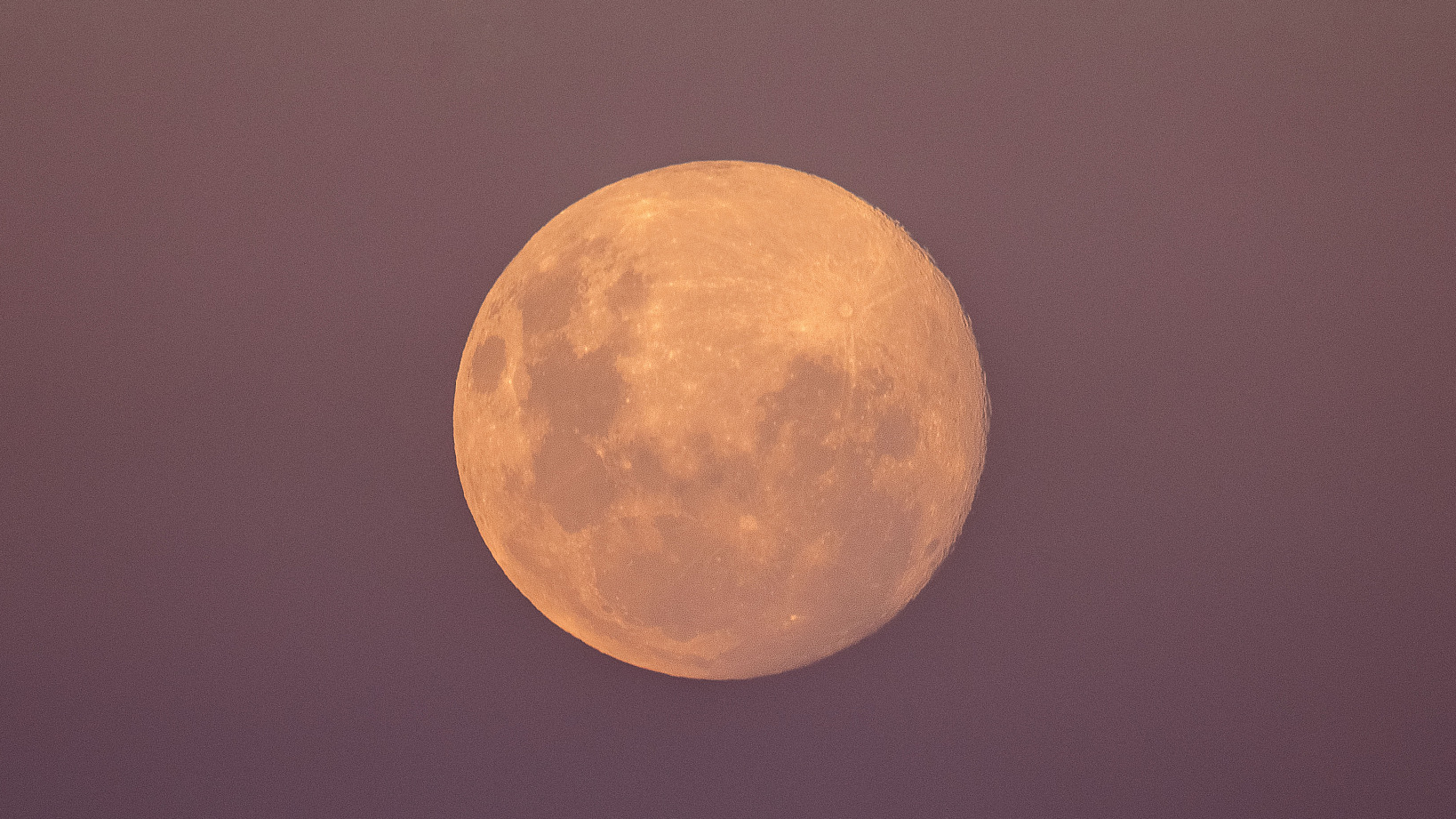00:30

The first of only two supermoons of 2021 starts with a Super Pink Moon on April 27 Greenwich Mean Time (GMT). It is about 14 percent bigger and 30 percent brighter than the faintest micromoon of the year.
According to NASA, this April supermoon got its name after the herb pink moss, also known as creeping phlox, moss phlox or mountain phlox, which is one of the earliest spring flowers appeared in the U.S.
Global enthusiasts, no matter where you are, will be able to observe the same 2021 supermoon. And even if there is bad weather, online observation is available.
What is a supermoon?

CGTN Infographic by Yin Yating
CGTN Infographic by Yin Yating
The term "supermoon" was first introduced by astrologer Richard Nolle in 1979, referring to either a new or full moon that occurs within 90 percent of perigee, its closest approach to Earth.
A supermoon can appear up to 14 percent larger and 30 percent brighter than when it is at its farthest from Earth. However, such difference may not be noticeable to the casual observers. During this April full moon, the moon will be about 363,300 kilometers away from Earth, and the moon is about 405,500 kilometers away from Earth for a micromoon.
Such fluctuation in the full moon's distance is because of the moon's orbit around Earth isn't perfectly circular but very slightly elliptical instead. If the full Moon occurs closer to the perigee (the closest point to Earth on this slightly elliptical orbit), it can appear bigger than if it occurs closer to the apogee (the farthest point).

A Super Pink Moon is seen rising over Bondi Beach in Sydney, Australia, April 26, 2021. /CFP
A Super Pink Moon is seen rising over Bondi Beach in Sydney, Australia, April 26, 2021. /CFP
How long will Pink Moon appear?
The approaching full moon will be at late night of April 26, 2021, appearing opposite the Sun in Earth-based longitude at 23:32 EDT. This will be the next day from the Atlantic Daylight Savings timezone eastward across Africa, Europe, Asia, and Australia to the International Date Line.
So for most regions following Greenwich Mean Time (GMT) or Coordinated Universal Time (UTC), the supermoon will occur on April 27, 2021.
On the whole, the moon will appear full for about three days around this time, from Sunday night through Wednesday morning.
How can I see a supermoon?
Regardless of where you are on Earth, you'll be able to observe the same phase of the moon. As the moon will rise in the east around sunset, you can still see the supermoon even if you're surrounded by trees or buildings as it will travel up and across the night sky. Observers located in the northern and southern hemispheres see the moon oriented differently in respect to the horizon.
When will the next supermoon be?
If you miss the April supermoon, there is another chance on May 26, 2021. NASA's Gordon Johnston wrote in a guide saying that the next supermoon will be even a little closer to Earth and slightly bigger, but only by about 157 kilometers, or approximately 0.04 percent of the distance from Earth to the moon at perigee. Therefore, the difference will still probably hard to be spotted by casual observers.
"Different publications use slightly different thresholds for deciding which full moons qualify as supermoons, but for 2021 all agree the two full moons in April and May are supermoons," added Johnson.
Read more:
Live: Pink Moon: First supermoon of 2021 rises over the sky

